Analyzing Sony’s PlayStation 4 Pro Hardware Reveal: What Lies Beneath
by Ryan Smith on September 8, 2016 8:00 AM ESTThe Polaris Connection
Meanwhile perhaps the most surprising aspect of Sony’s announcement isn’t the specifications reveal, but rather that Mark Cerny directly referenced AMD’s Polaris architecture, stating that Sony/AMD "adopted many new features from the AMD Polaris architecture." This is a statement that has a lot of ramifications, but also a statement where nuance is critical because it’s so vague.
To examine the Polaris connection, let’s take a step back in how AMD develops their GPU families. While we like to think of architectures as a monolithic thing- that every aspect of an architecture is built specifically for that given architecture – the truth is quite different. Internally, AMD’s GPUs are developed in block fashion; each major functional unit can be developed separately, and AMD can mix and match the two. Typically, but not always, a major discrete GPU generation contains the latest versions of all of these blocks. Meanwhile semi-custom wins can get a lot murkier since the business is based around AMD being able to integrate just the parts that a customer needs.
Polaris is a great example of this. Compared to Fiji (GCN 1.2), AMD revised the command processor, the display controller, the multimedia engines and the geometry processor. Meanwhile the all-important shader cores were technically revised, but in practice other than increased internal memory, they are ISA-identical to GCN 1.2. Finally, AMD did not touch the render backends, the rasterizer, or the work scheduler at all.
This means that Sony can equally pick and choose which parts of the GPU they want to update, which is important given the forward compatibility mandate of the PS4 Pro. Adopting features from Polaris does not mean that this is a full Polaris GPU.
Given the updated specifications of the console, I think it’s safe to assume that AMD has integrated their newer generation display engine and multimedia engine. The former is necessary to add support for HDMI 2.0 – critical for the console’s 4K display capabilities – while the latter is equally necessary to support 4K video decoding, including the most recent HEVC format that 4K services have been preferring.
Beyond that, however, there’s nothing that definitively points to the PS4 Pro’s SoC integrating other, newer components from Polaris. An updated memory controller would make a lot of sense if the memory clockspeeds are higher, but whether the shader cores or geometry engine have been touched are both very good questions. The PS4 has previously been described as using a GCN 1.1-era shader core, so it’s not impossible that it simply uses a larger version of such core (as opposed to Polaris’s GCN 4) to ensure compatibility. Essentially Sony & AMD’s options run the gamut from a truly updated PS4 SoC to a Polaris 10 stuffed into an SoC, and depending on Sony’s technical needs, both options would be valid.
Power Consumption, HDR, & Closing Thoughts
Finally, also on Sony’s official spec sheet is the maximum (“up to”) power consumption of the console. These values aren’t comparable to the TDPs we’re accustomed to with discrete video cards, but they’re useful for intra-PlayStation comparisons.
In this case, Sony has published that the PS4 Pro has an up to power consumption of 310W. We don’t have a similar official number for the original PS4, however its PSU is widely reported as being rated for up to 250W. Meanwhile we do have a similar number for the new slim PS4, which is 165W. So right off the bat we can see that the PS4 Pro’s maximum power consumption is significantly higher than its slim sibling, and still higher than its original 28nm generation counterpart.
Even with the move to 16nm, it’s not possible to improve an SoC in this fashion without increasing the power consumption. The GPU alone offers better than 2x the throughput of the 28nm console, and the Jaguar cores are clocked higher as well. Though it doesn’t look like we’re approaching the extreme power consumption of the likes of the original PlayStation 3, it’s clear that power consumption has gone up for the PS4 Pro, and that relative to the comparable slim PS4, there’s a significant power cost for the console’s much improved capabilities. Which is by no means unexpected, but it’s interesting to see Sony willing to build a bit bigger, bit more power hungry console than what they did with the original PS4.
Meanwhile, it’s worth pointing out that Sony has opted to equip the console with the same 6x BD-ROM drive as used in the other models, meaning that the PS4 Pro cannot play Ultra-HD Blu-Ray discs. Given Sony’s stake in the development of the Blu-Ray standards, this is a bit surprising. From a technical perspective I have no doubts that the SoC is capable of all of the necessary video decode and DRM responsibilities, as the requirements for streaming 4K services are similar, if not higher. So perhaps this is about licensing fees, or drive costs, or just that Sony is betting on the future of streaming over the future of optical disks.
Speaking of video, though I haven’t covered it in depth, HDR is a major focus for Sony as well. PS4 Pro obviously gets it, and thanks to the presence of HDMI 2.0, it gets the best support for it. Going by previous statements from AMD on GPU architectures, PS4 Pro should be fully capable of HDR for gaming, photos, and movies.
And in a surprise announcement, Sony also announced that they are backporting HDR support to the new slim PS4 and the original PS4. Looking again at our chart, we see how this can work: AMD’s older display controller (represented here by the Radeon 300 series) can support HDR, even over HDMI 1.4b. However there’s a bit more uncertainty in just what the older consoles can do with HDR. In the dGPU space, the lack of HDCP 2.2 support has been cited by AMD as one of the reasons their older GPUs can’t support HDR movies. However other Sony statements have indicated that there will be HDR support for YouTube and Netflix on the older model PS4s. So just what are technical limitations and what are contract limitations is not clear. Presumably we’ll have a better answer next week whether the original PS4 has all of the Pro’s HDR capabilities (sans 4K) or if there are further limitations that just haven’t been made clear yet.
Wrapping things up then, alongside announcing the PS4 Pro console, Sony also announced a ship date and a price. A 1TB version of console will be hitting the streets on November 10th for $399, and preorders have already started. This is the same price that the original 500GB PS4 launched at nearly 3 years ago, and $100 more than the new $299 500GB slim PS4. The slim PS4 has of course already been fully disassembled, and it goes without saying that I’m looking forward to seeing what lies beneath the new PS4 Pro once it gets its own teardown treatment.


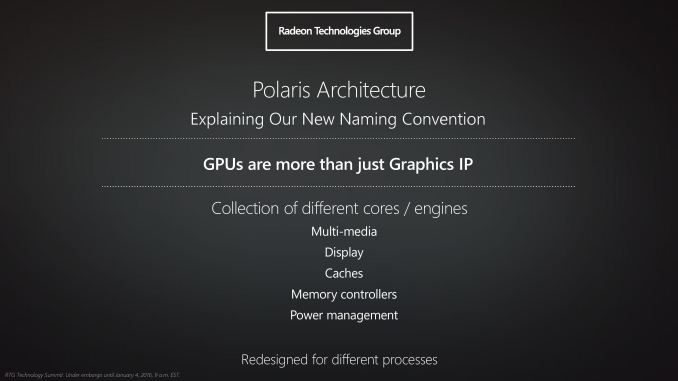
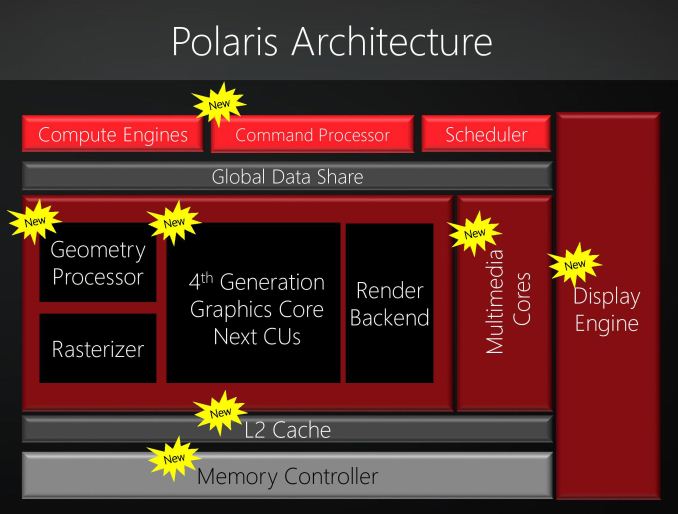
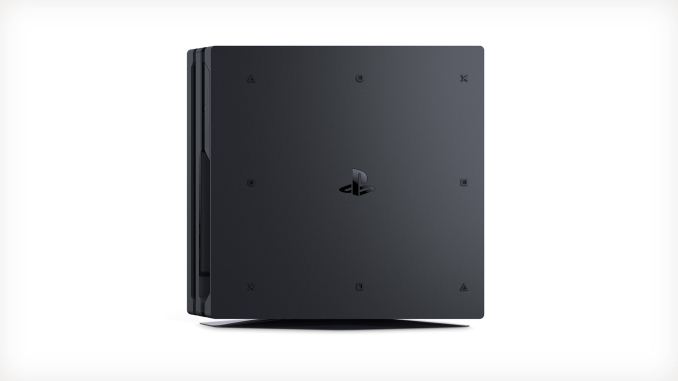
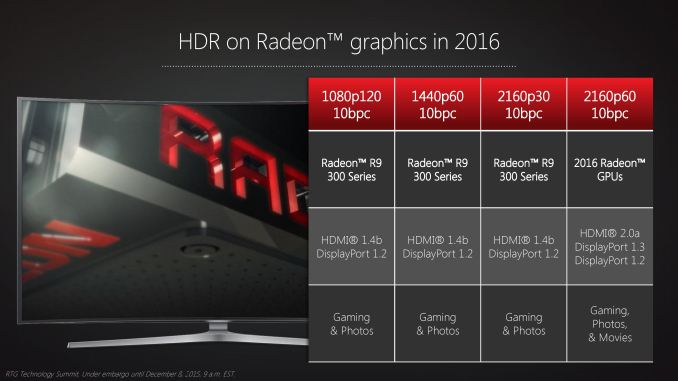
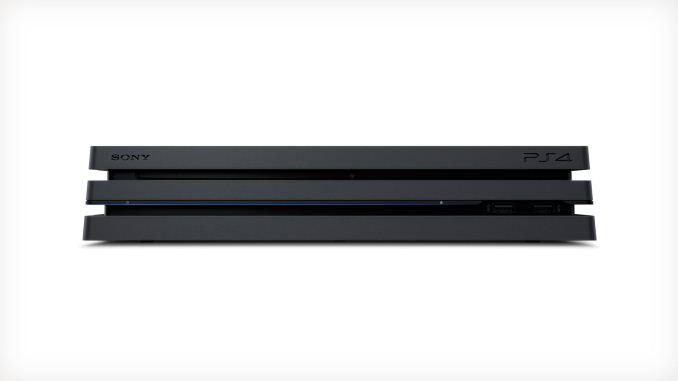








207 Comments
View All Comments
Xajel - Sunday, September 11, 2016 - link
It is, 4k is 2x the horizontal resolution ( 2*1920 = 3840 ), and 2x the vertical resolution ( 2*1080 = 2160 ), so 4k is a matrix of 2x2 Full HD, so it's 4 times the resolution...in another words:
1920*1080 = 2073600 pixels, almost 2 millions, that's why it's some times called 2MP
3840*2160 = 8294400 pixels, that's exactly 4 times 2073600 pixels in fHD
u.of.ipod - Friday, September 9, 2016 - link
Do you think the PS4 will support 21:9 aspects now?namechamps - Friday, September 9, 2016 - link
Um no. They are consoles designed to be hooked up to TVs. When 21:9 TVs are mainstream (aka never) they will support it.mapesdhs - Saturday, September 10, 2016 - link
What I used to like about consoles was the way in time game devs squeezed everything out of the hw, which is why in its latter stages the PS2 had such excellent games such as, "Black". This new vogue of multiple in-life hw changes will mean the days of optimised coding are coming to an end. Consoles are going to adopt the same brute force approach to achieving better fidelity, ie. just up the raw performance. It's already bad enough that modern consoles require OS updates, etc. Definitely not what consoles used to be.However, someone pointed out earlier that it's really about the games, and I've certainly played plenty that were a lot of fun even if the visuals were lacking, which certainly includes a number of N64/PS2 games (still like playing PS2/Mercenaries, though I thought Goldeneye looked quite good at the time). I hope console gamers don't become blinded by specs; if a game is not fun to play, having 4K support won't matter one way or the other. It's why I never bothered with Skyrim; great visuals, but after reading a lot about its gameplay, I decided to stick with Oblivion.
The way this Pro is being described though, it reminds me of the "HD-ready" nonsense that was banded about for many years wrt TVs, models that used 1336x768 or similar. So many people bought them thinking they were getting genuine HD. I can see games for the Pro touting 4K "support" when behind the scenes it's just upscaling from 1080p or 1440, a very misleading approach which shouldn't be allowed. And not including an Ultra HD capable BR drive is just bizarre; one can hardly say the future is streaming when consumers don't even have the ability to make the choice.
Oh well, either way, it's up to consumers in the end. If people buy the Pro and Sony makes a success of this whole approach, then that's the way it will be. I just think it's sad that the original PS4 will never have its own "Black" moment, as it were. However, with more frequent hw updates for consoles, the rationale for spending the same money on PC tech does become stronger IMO; alas, the PC side is going through its own price gouging frenzy in recent years.
Xajel - Saturday, September 10, 2016 - link
the PS4P is somehow in weird position, The console is strong enough to be 4K capable, but not strong enough to be a true 4K gaming machine, while this is expectable in terms of the requirements of 4K gaming in current time, but looking at how thing are now in the move for the new architecture, which in only few months would be possible to be integrated into the APU, and also the Zen core which can be also integrated into the APU in few months... after all AMD them self are expecting to have Zen+Polaris APU in next year...In the other hand, not having a UHD Blu-ray support is a big let down... If the reason is just a need for a faster ODD then it's unforgivable mistake by Sony,, how much this will cost more ?
Sony excuse is : What the market demand, hell it's not... since PS3, PS has been known as a complete home entertainment solution. PS3 stood as a very good media player too.. PS4 was a let down in the beginning duo to lack of Media capabilities... and now they're not supporting UHD BD for what ? few bucks ? I know that Physical disks are becoming less and less common now but why when it's only a matter of few bucks only to be complete media solution !!
cocochanel - Saturday, September 10, 2016 - link
The Pro was designed to run VR. What would be the point of creating a fancy VR headset and sell it for $600 if the current PS4 can't run games made for it ?Soundgardener - Saturday, September 10, 2016 - link
"As AnandTech is not a gaming website, I’m going to skip the gaming ramifications"So the fact that the PLAYstation 4 is a GAMING CONSOLE doesn't inform the rhetorical context...?
Ryan Smith - Monday, September 12, 2016 - link
It's more that there's a whole secondary discussion on what this means for PS4 game development and what it means for current PS4 owners that we're not a position to discuss.DanaGoyette - Sunday, September 11, 2016 - link
I think they ought to add FreeSync support, either via DisplayPort, or via HDMI (as they've shown is possible). That would be nice for cases of frame-rate dips.Fidelator - Sunday, September 11, 2016 - link
The HDR back port was surprising, and I truly welcome it, I believe it was a good time to adopt 4k and that Sony made the right call, would have been a considerable challenge to expect it to render everything at 4k, as an OG PS4 owner, I don't understand the people complaining, they are offering a console to take advantage of a new technology, it does the exact same thing as the old PS4, your console isn't obsolete, but it takes advantage of a 4k TV if you have one